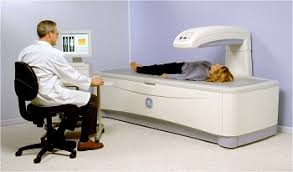Your total body weight is made up of many elements; including water, fat, muscle, bone and connective tissue (i.e. ligaments and tendons).
When you weigh yourself traditionally on scales, it is difficult to get a complete picture of what changes might be occurring within your body. Standing on the scales does not reflect changes in the various elements that make up your body
For example, an increase in total body weight can be attributed to an increase in water within your body; and increase in muscle mass OR and increase in body fat. Your weight reading does not give you the complete picture of what is changing.

Conversely, a loss of body weight as shown on your scales could be the result of many factors. It could indicate a loss of muscle tissue, a loss in water stored OR a reduction in body fat. A loss of scale weight can also be a combination of all three of these variables. You simply cannot know.
The scales don’t accurately give a complete story of what is occurring within your body (positive or negative!).
Another challenge with taking your scale weight is its failure to give you the amount of body fat stored in (and on) your body. When you body fat levels are too high; this is dangerous and is link to a higher risk of cardiovascular disease, many cancers and type 2 diabetes.
Body Composition Analysis
DEXA Scans
Testing your body composition is a solution which gives you a much clearer understanding of what levels each of these elements are within your body (ie. Fat, muscle, minerals and water).
Scientific analysis of your body composition removes any guess work and can enable more accuracy in the design of your exercise programming and nutritional strategies.
There are a few different methods for measuring your body composition.
The only direct method is a DEXA (dual-energy X-ray absorptiometry) scan. A DEXA scan is a whole-body scan using two low energy X-ray beams. DEXA is largely used in the measurement of bone mineral levels; used for the analysis of osteoporosis and osteopenia.
DEXA is also used for analysis of body composition; and due to the expense of the equipment are usually located in hospitals and academic institutions.
DEXA scans are the most accurate in the measurement of body composition.

Body Composition testing can also be measured in the field with indirect methods.
Skinfold Testing
Skinfold measurement have been the traditional method of body fat analysis. This method has been shown to lack inter-test reliability due to the difficulty in ensuring the right location on the body is used on every test.
Bioimpendance Analysis
With the advancement on technology; the most accurate field test for body composition analysis is the use of bioelectrical impedance measuring. As the name suggests; this technology uses a low-level electrical impulse to measure the impedance of the body.
Each tissue within the body (fat, muscle, bone, ligaments etc) will impede this electrical activity differently; and thus, allows for an analysis of the levels of each of these tissues within your body.
Bioimpedance analysis is the most advanced and accurate field testing of your body composition.
Furthermore; bioimpedance analysis of your body composition also enables you to determine the levels of fat stored as subcutaneous fat; and as visceral fat.
Subcutaneous fat is stored immediately beneath the skin layer and is used to regulate your body temperature.
Visceral fat is the dangerous fat stored around your stomach; where all your vital organs are. Excessive visceral fat in your body is linked to a higher risk of type 2 diabetes and cardiovascular disease.
One of the benefits of a bio-impedance analysis in the field; such as the use of the EVOLT 360 is that you can measure your total volume of subcutaneous fat and visceral fat. This specific knowledge can guide your exercise programming and required dietary changes.

Exercise Programming with Body Composition Testing
Scientific analysis of your body composition enables better exercise programming by knowing exactly what your body requires.
Resistance training programs can be specifically designed to build lean muscle; in areas of your body that may be low or underdeveloped. The body composition testing can also highlight differences in lean muscle from one side of your body to the other. These discrepancies can be changed through scientific program design.
Understanding your levels of body fat can guide your requirements for cardiovascular exercise, weight training and / or dietary requirements.
Programming the right volumes of cardiovascular training can be designed based on your ratio of lean muscle to body fat. Understanding what your body needs through accurate body composition analysis guides the exercise programming process.
Our Exercise Physiology team at Inspire Fitness are available to undertake body composition analysis with you by appointment. You will receive a complete analysis, report and scientific interpretation of your results. Bookings can be made by contacting Inspire Fitness on 9857 3007.
